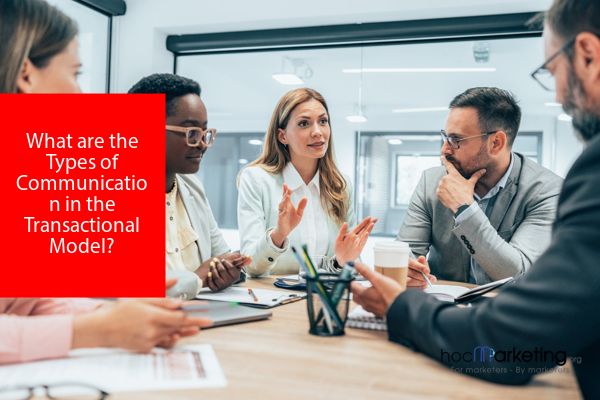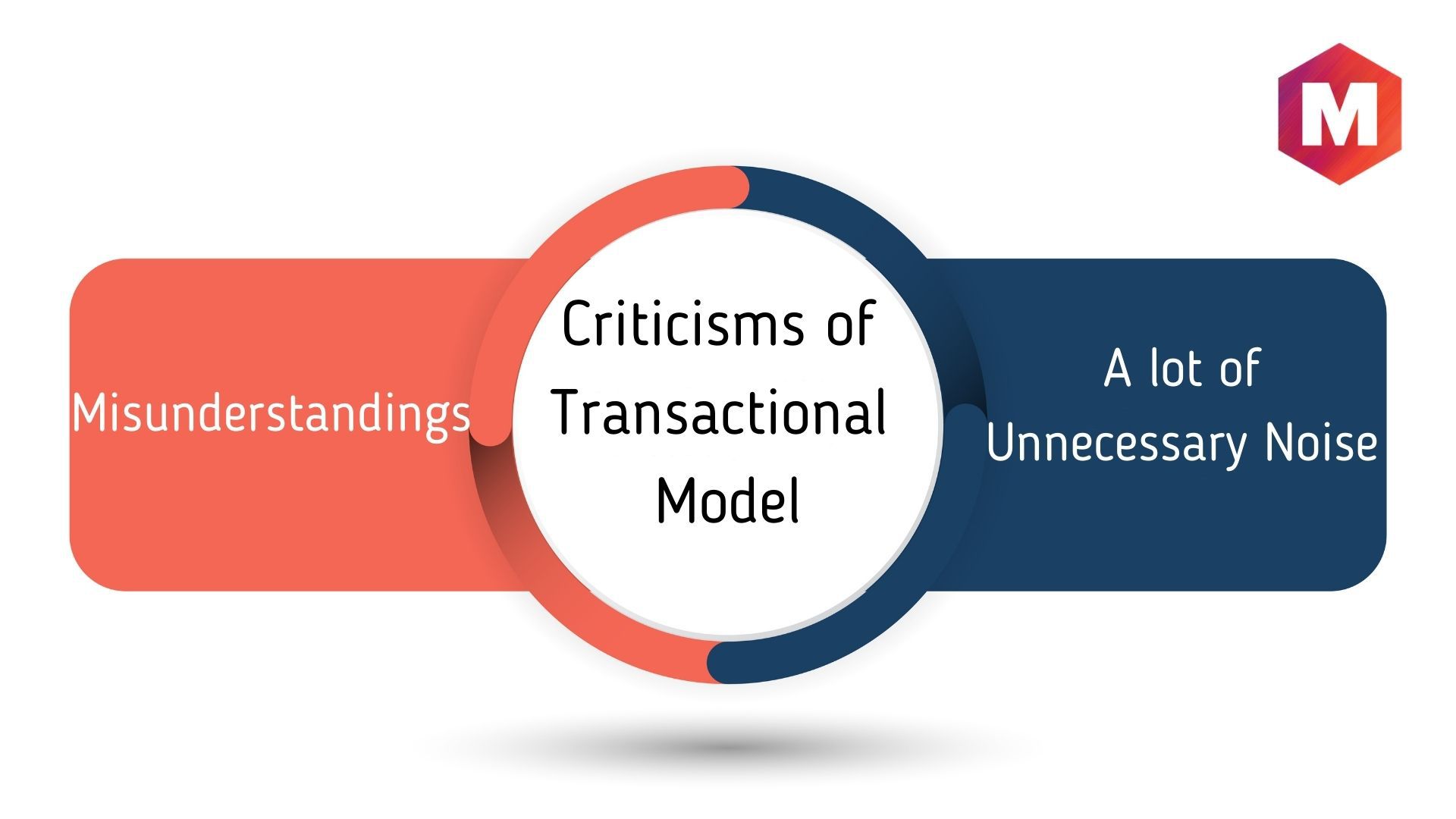
What are the Types of Communication in the Transactional Model?

The Transactional Model of Communication is a continuous exchange of information where both parties play active roles in the communication process It involves the social, relational, and cultural context, but can lead to misunderstandings and unnecessary noise Examples of this strategy can be seen in various contexts
What is the Transactional Model of Communication?
The transactional model of communication involves a continuous and interactive exchange of information between both the sender and receiver. This process can involve human beings or machines, and communication is seen as a circular model where messages are sent and received simultaneously. Unlike other models, the transaction model is a two-way process, rather than a linear one-way communication model.
The transactional model of communication is commonly utilized in interpersonal communication, requiring both message senders and receivers to be active in order to maintain open communication. If the receiver is unable to listen to the sender, transactional communication within the interaction model cannot occur. This model encourages communicators to establish relationships, engage in dialogues to foster communities, shape self-concept, and build intercultural alliances through message exchange.
Factors affecting the transactional model of communication
The transactional model of communication is influenced by a multitude of factors, both directly and indirectly. These factors are heavily influenced by cultural and societal norms, which can have a significant impact on the communication process. The unique features of this model lie in its ability to generate social realities within cultural, relational, and social contexts. It takes into account the sender and receiver of messages and highlights how communication models can shape communities, relationships, and ultimately, realities. Some of the crucial factors that affect communication include:
1. Social Context Model
Communication is heavily influenced by the societal context in which it occurs. This context encompasses the laws, norms, and values that govern communication within a particular society. It also includes the various rules and restrictions that individuals must adhere to, which can limit their ability to communicate freely according to their personal desires.
As we grow, we tend to absorb social norms intuitively such as greeting people with a smile, expressing gratitude when receiving compliments, never lying, showing respect to elders, speaking truthfully, and apologizing for mistakes. This is achieved through the guidance of parents, grandparents, and teachers who teach us the importance of adhering to social rules from a young age. Similarly, people acquire knowledge of unwritten social norms through observation and practice. One can learn to communicate effectively in the transaction model through trial and error, and even receive feedback through awkward glances when committing a faux pas.
An illustrative example of this concept is Rajat's experience on his first day of work when he wore informal attire to the office. The strange looks he received made him realize that he had broken a social norm. Rajat learned from his mistake and made sure to adhere to the office dress code in the future, avoiding further embarrassment. Although there is no formal punishment for breaking social norms, it can create difficulties and cause embarrassment for the individual. The transaction model of communication recognizes that social reality influences communication, but also acknowledges that communication itself shapes social reality. Furthermore, the model emphasizes the importance of establishing relationships within a community through effective communication.
2. Relational Context Model
The relational context in the communication process refers to the manners and previous relationship or interpersonal history.
The behaviors of human beings are heavily influenced by pre-existing values and norms. When encountering someone for the first time, interactions tend to be more awkward and stilted, whereas established relationships make communication much easier. In these established contexts, people may be more likely to bend or break social norms, as they have a better understanding of the expectations. Additionally, the type of relationship between individuals plays a significant role in determining how they interact. In formal or new relationships, people often put in more effort to follow established norms and rules, whereas those who have been in a workplace or social group for a longer period of time may have already established a level of understanding and familiarity.
3. Cultural Context Model
In the communication process, the cultural context plays a significant role as it encompasses various factors that influence people's identity and lifestyle. These factors include social class, nationality, gender, race, ability, sexual orientation, and ethnicity. Individuals who share a similar cultural background tend to communicate more effectively than those from different cultural groups.
The impact of cultural identities on communication cannot be ignored. Marginalizing certain cultural groups can create uncertainty and hinder the communication process. Conversely, those with dominant identities often overlook the role their identity plays in communication. Additionally, individuals tend to exhibit closed mindsets towards other cultural groups, which can impact the exchange and response between sender and receiver. Factors such as mindset, social upbringing, cultural beliefs, mood, attitude, and experiences all contribute to this phenomenon.
Developing an open and accepting perspective towards other cultural identities is crucial. Through consistent practice and introspection, one can cultivate the ability to navigate various cultural contexts with ease. For more information on the Transactional Model of Communication, check out this video.
Criticisms of Transactional Model of communication strategy
The criticisms that the transactional model of communication faces are as follows-
1. Misunderstandings
Effective feedback plays a crucial role in interpersonal communication models as it helps to eliminate any confusion or misinterpretations. In the absence of proper feedback, it becomes impossible to gauge whether the receiver has comprehended the message as intended by the sender.
2. A lot of unnecessary noise
Communication is simultaneous in the transactional model of communication and this results in a lot of unnecessary noise.
Examples of the Transactional Model of Communication strategy
Some transactional model of communication examples is given below to explain the concept in clear terms.
Effective communication in the transaction model requires both the sender and receiver to be equally involved in the process. If the receiver does not acknowledge or respond to the message, the transaction cannot be completed. Additionally, the medium used to convey the message can impact its reliability and efficiency. Face-to-face communication allows for non-verbal cues to enhance the message, while phone calls lack this aspect.
:
The transactional model of communication emphasizes the significance of environmental factors and contexts, as well as the decoding and encoding of non-verbal communication and the provision of simultaneous feedback. This model also encompasses routine interactions. Individuals who share a common social system or reside in a similar environment are more likely to communicate effortlessly with each other than people who come from diverse backgrounds.
The "Transactional Model of Communication" was first introduced by Dean in 1970 and later analyzed by Otis and Sam in their 1977 article published in the Journal of Business Communication. This model highlights the reciprocal nature of communication, where both the sender and receiver are simultaneously sending and receiving messages.
Skinner, B. F. (1957). Verbal Behavior. New York: Appleton-Century-Crofts
Wilbur, S., & Donald F. (1971). The Process and Effects of Mass Communication. Urbana: University of Illinois Press
Thank you reading our article about business communication model.
NEXT
Interactive Model of Communication
PREV
Shannon and Weaver Model of Communication
START
Communication Models








